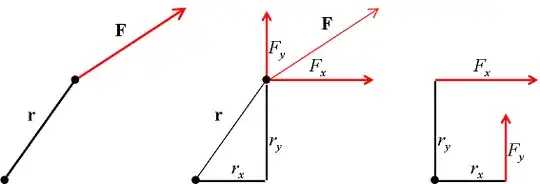I have decided to start learning physics before I am required to take the class in 11th grade so that I will be ahead of my classmates. I found a cheap physics book on amazon and ordered it but complications occurred when it introduced the Vector/Cross Product. It gives the following equation:
$$\mathbf{A} \times \mathbf{B} = \begin{bmatrix} A_y B_z - A_z B_y \\ A_z B_x - A_x B_y \\ A_x B_y - A_y B_x \end{bmatrix} $$
But it doesn't give any further information such as where the numbers come from. I found the Dot Product to be fairly strait forward while the arrangement of the numbers in this equation seem random at best so I am asking:
- Why are the values of the two vectors arranged as they are in this equation?
